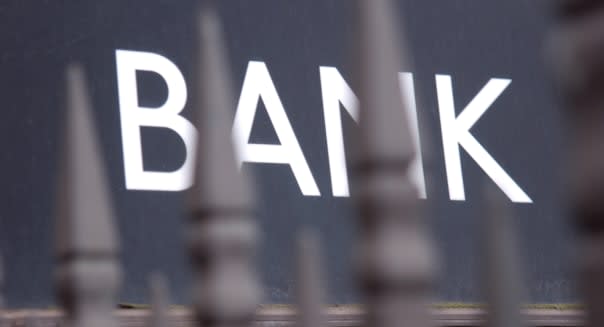What the Fed's Low Rate Policy Cost U.S. Savers: $750 Billion

You've probably heard the old political quote, "A billion here, a billion there, and pretty soon, you're talking real money." Attributed to the late great Sen. Everett Dirksen, it's a reminder that, on the scale of national economies and government budgets, numbers get so big they can start to lose meaning to ordinary people.
It's hard to envision a what one billion greenbacks stacked in a pile would look like. After a certain point, we start to think of most big-dollar values as just equivalent to "a lot." Or maybe, a "real lot." (For reference, we at DailyFinance are rather fond of the XKCD visual guide to huge sums of money.)
So when we see a new report out of MoneyRates.com explaining that "the Federal Reserve's low-interest rate policies ... over the last five years" have cost depositors an estimated $757.9 billion -- what are we supposed to make of that? What does it really mean?
The Meaning of a Billion
In practical terms, it means that thanks to the Federal Reserve and its policies of continual quantitative easing -- buying up debt of all shapes and sizes and forcing interest rates down in response -- the average American is $2,414.46 poorer than he or she would have been, all other things being equal.
As MoneyRates explains, historically, the interest banks pay depositors to hold their money has tended to track the national rate of inflation. When inflation goes up, banks pay a bit more for access to depositors' money, so that the real value of a savings or checking account goes up over time.
That's the way the world is supposed to work. However, in MoneyRates.com's words, "Since 2008, the Fed has taken aggressive measures, including keeping the federal funds rate at an all-time low and instituting its quantitative easing program, to keep interest rates at artificially low levels."
The effect of the Fed's quantitative easing has been to prevent interest rates from rising in tandem with inflation. Instead, with money market savings accounts paying 0.1 percent or less interest this past year, but inflation averaging 1.5 percent, the value of Americans' deposits in their bank accounts declined by $122.5 billion relative to inflation in 2013. Added to similar relative losses from 2009 to 2012, the combined loss of purchasing power from dollars devalued by inflation and not replenished by increases from bank interest has totaled $757.9 billion over the past five years.
Not Everyone Lost
It hasn't all been bad news. The abundance of cheap money has been good news for the stock market (which recently hit yet another all-time high), for sellers of real estate (since low interest rates have resulted in cheaper mortgage loans and permitted buyers to ante up bigger prices), and for the economy as a whole, with unemployment falling back toward normal levels.
%VIRTUAL-article-sponsoredlinks%But that's only good news for those Americans who own homes, have investments, have mortgages, or are employed. And the gains from lower mortgage rates tend to skew toward wealthier homeowners -- who have been able to refinance bigger piles of debt at recent low interest rates.
Of course, the biggest winners from what MoneyRates.com senior financial analyst Richard Barrington calls America's "stealth bailout" have been the banks. "Low-interest-rate policies have helped bail out banks, the stock market and real estate," he notes Barrington. With the federal government basically printing money and handing it out to banks for free, the bankers have been able to make nice profits even when charging low interest rates on their loans -- because they pay next to nothing for the money they're loaning out.
Last year, U.S. banks as an industry recorded their best quarterly profit ever -- $42.2 billion in the fiscal second quarter. Then they broke that record in the fourth quarter. As far as 2014 goes, results have been mixed -- but Citigroup (C) managed to eke out a nice 4 percent rise in quarterly profit in the first quarter, and Wells Fargo (WFC) grew its profits 14 percent -- so the Fed's stealth bailout seems to be still working out well for some of them.
That's been good news for banking stock investors. Between rising profits and the fact that stocks in general are in favor, banking stocks have enjoyed strong gains these past few years. But as for mom-and-pop banking customers, they're feeling left out. Indeed, as my Motley Fool colleague and fellow DailyFinance contributor Tim Beyers lamented a couple of years ago, with interest rates paying next to nothing: "I often have a hard time explaining to my kids why they should put some of their money in the bank."
Hope for the Children?
For now, those kids -- and all of us, really -- can only hope that the Fed will continue with its plan of ratcheting back its monthly bond purchases, and that interest rates will at some point return to "normal." Then, maybe we'll once again earn enough from our bank deposits to at least cover our losses from inflation.
Let's hope it happens sooner rather than later, though, because... a billion dollars here, and a billion dollars there, may be "real money." But the 0.1 percent interest banks are paying us on our savings is not.
Motley Fool contributor Rich Smith has no position in any stocks mentioned. The Motley Fool recommends Wells Fargo. The Motley Fool owns shares of Citigroup and Wells Fargo and has the following options: short June 2014 $50 calls on Wells Fargo and short June 2014 $48 puts on Wells Fargo.

